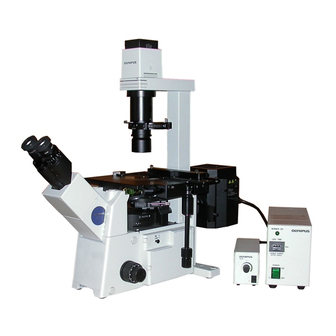Table of Contents
Advertisement
INSTRUCTIONS
IX71 /IX51
INVERTED RESEARCH MICROSCOPE/
INVERTED BASIC MICROSCOPE
This instruction manual is for the Olympus Inverted Microscopes Models IX71 and IX51. To
ensure the safety, obtain optimum performance and to familiarize yourself fully with the use
of the microscope, we recommend that you study this manual thoroughly before operating
the microscope. Retain this instruction manual in an easily accessible place near the work
desk for future reference.
A X 7 3 1 9
Advertisement
Table of Contents












Need help?
Do you have a question about the IX71 and is the answer not in the manual?
Questions and answers